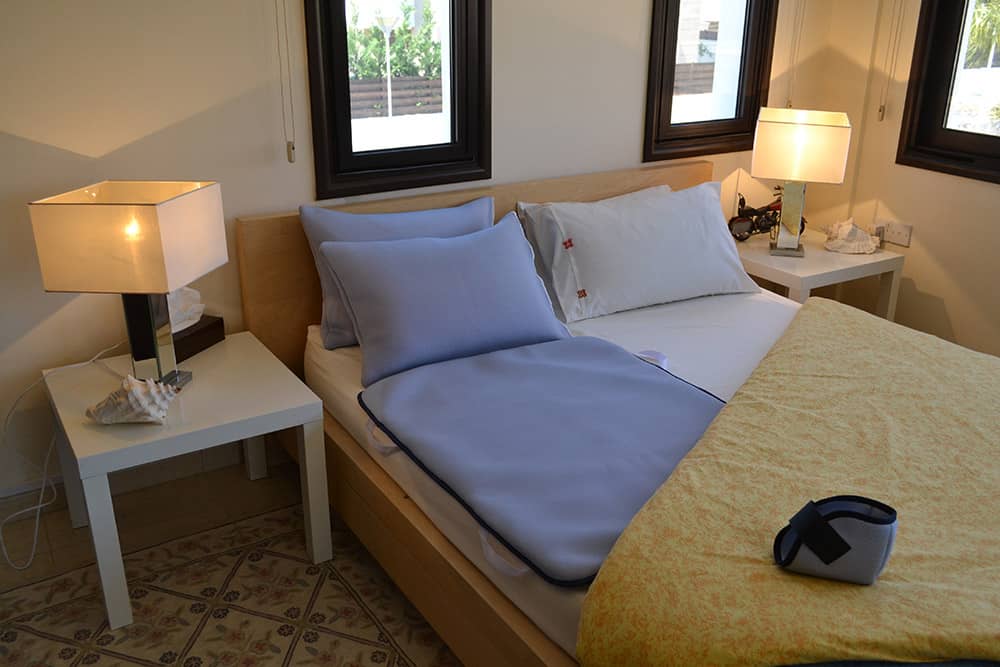Could Treat-Eezi spell the end for pressure ulcers?
For over 20 years, the healthcare industry has relied on Alternating Air Beds, either as an overlay or a deep profiling bed system, as a means of preventing and tackling pressure ulcers. Derek Timm, Co-Director at Dan Medica South, discusses a revolutionary new solution that could effectively tackle the issue.
The pressure care specialist highlights that traditional Alternating Air Beds that rely on different pumps and mediums such as sand and air can have inherent issues. The systems, designed to stimulate blood flow through a massaging effect as they pump air or sand in and out of plastic or cloth membranes, can be costly ranging in price and quality from £150 to £30,000.
These electric systems also cost to operate and should the mattress be punctured or if the air being pumped to a cell escapes into the atmosphere – with the cells running flat then creating pressure on the contacting tissue- then the system would need to be replaced.

Various methods of prevention and treatment have been explored for more than a decade and there has been significant growth in the world of fabric technology, with different healthcare departments investigating polyester fibres capable of supporting the body without the need for pumps as a possible solution.
Derek told us: “Medical papers from The Exogenous Dermatology Review dated as far back as September 2002 and written with findings of Chronic Wounds-Pressure Relief by the Department of Dermatology, Dresden University Hospital Germany, prove that single weave spacer fabrics were useful in treating chronic venous insufficiency.
“With this in mind, we set about to create a fabric that could be pressure mapped below capillary blood flow at just 28mm Hg. This would avoid any arterial insufficiency and allow steady blood flow at even under the most direct pressure points of the body when laying in a supine position on a normal hospital bed.”
The result was the Treat-Eezi fabric, a unique, patent-pending three weave polyester fabric that is vastly more complicated than the original one weave design. To the company’s knowledge, there is only one factory in the world that is able to weave a three-layer construction that collapses in a sideways motion when under body weight, enveloping the contact areas to offer support.
“Treat-Eezi went one step further by adding a slippery surface interlayer under the first layer of fibres,” Derek explains. “When the body moves on the top surface, the under-layer glides to compensate for shearing forces and friction. Although at this moment in time it is impossible to measure shearing forces on a cushion or mattress surface, we know a good 95% of pressure ulcers are caused by this. To bring those down to little more than zero is another reason our Treat-Eezi static system has been able to help heal even stage four pressure ulcers.”
The company says that now with the advantage of Vapour Permeable Covers designed to prevent cross-infection in the Acute Care sectors, there is no reason why Treat-Eezi technology cannot be used in any Community or Hospital setting. Further work is also continuing using the Treat-Eezi fabric in between the skin and plaster casts, on stretchers in ambulances and for use with epilepsy monitors and more.
Derek concluded: “It aids better sleep and offers the same high-risk protection but without the need for maintenance, lasting longer than nearly every alternating air bed plus proving more cost effective over a 4-year period.”
The company owns the exclusive worldwide rights to the Treat-Eezi brand and has supplied over 4,000 clients with Treat Eezi in the UK, estimating savings to the NHS of well over £1 million+, as well as working with a range of manufacturers in the industry, including Simple Stuff Works.
To find out more, visit HERE


